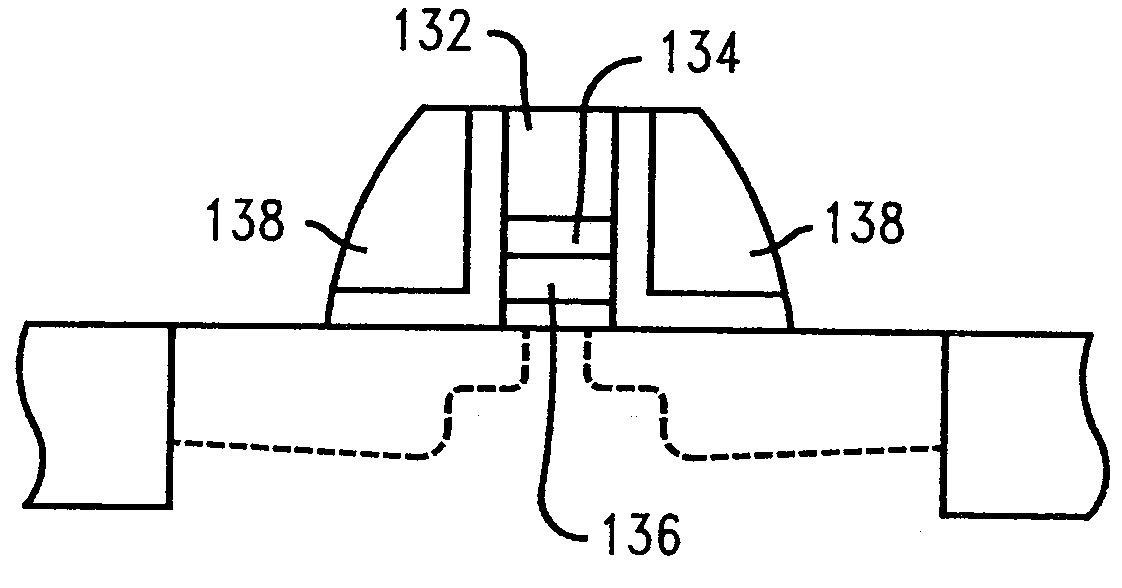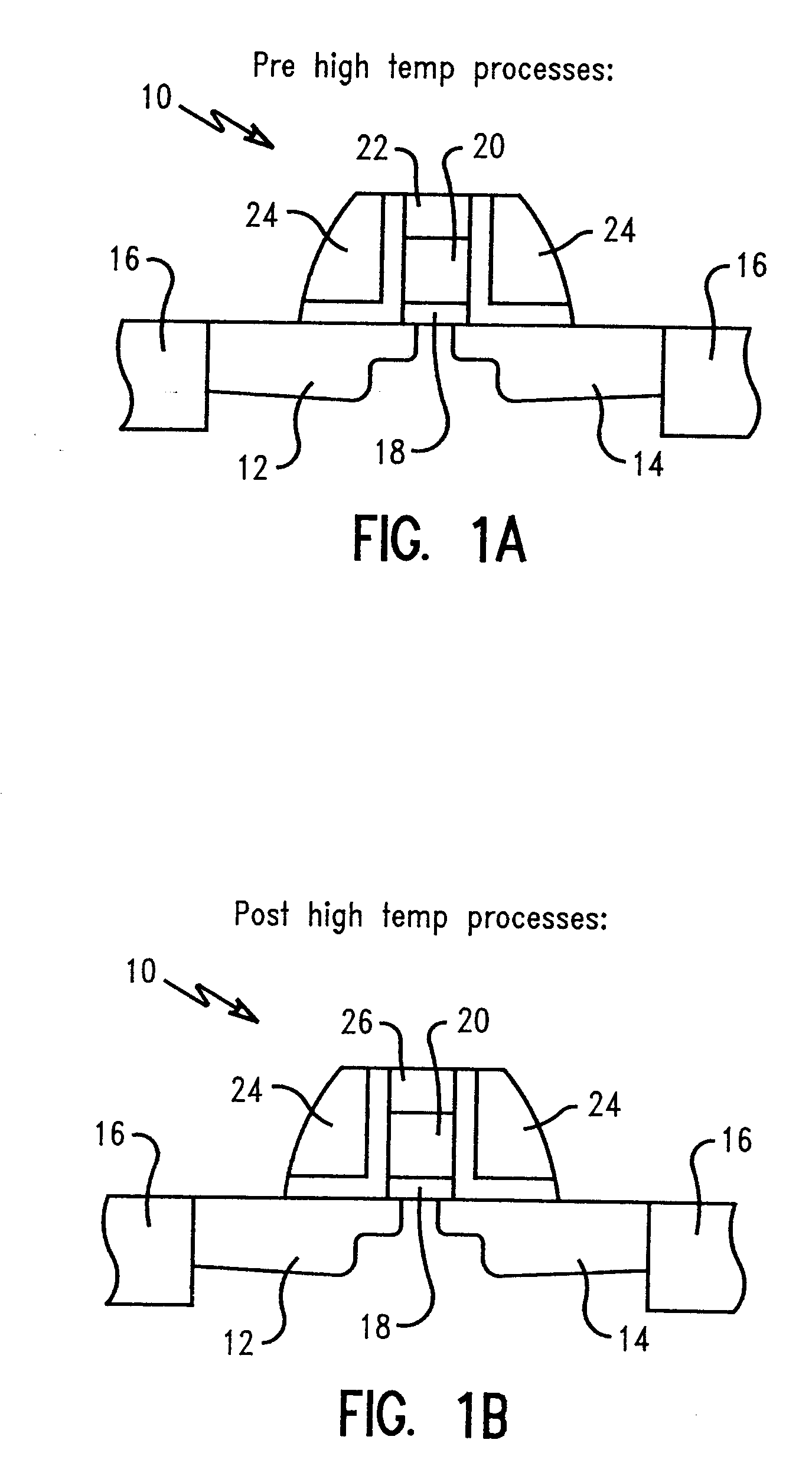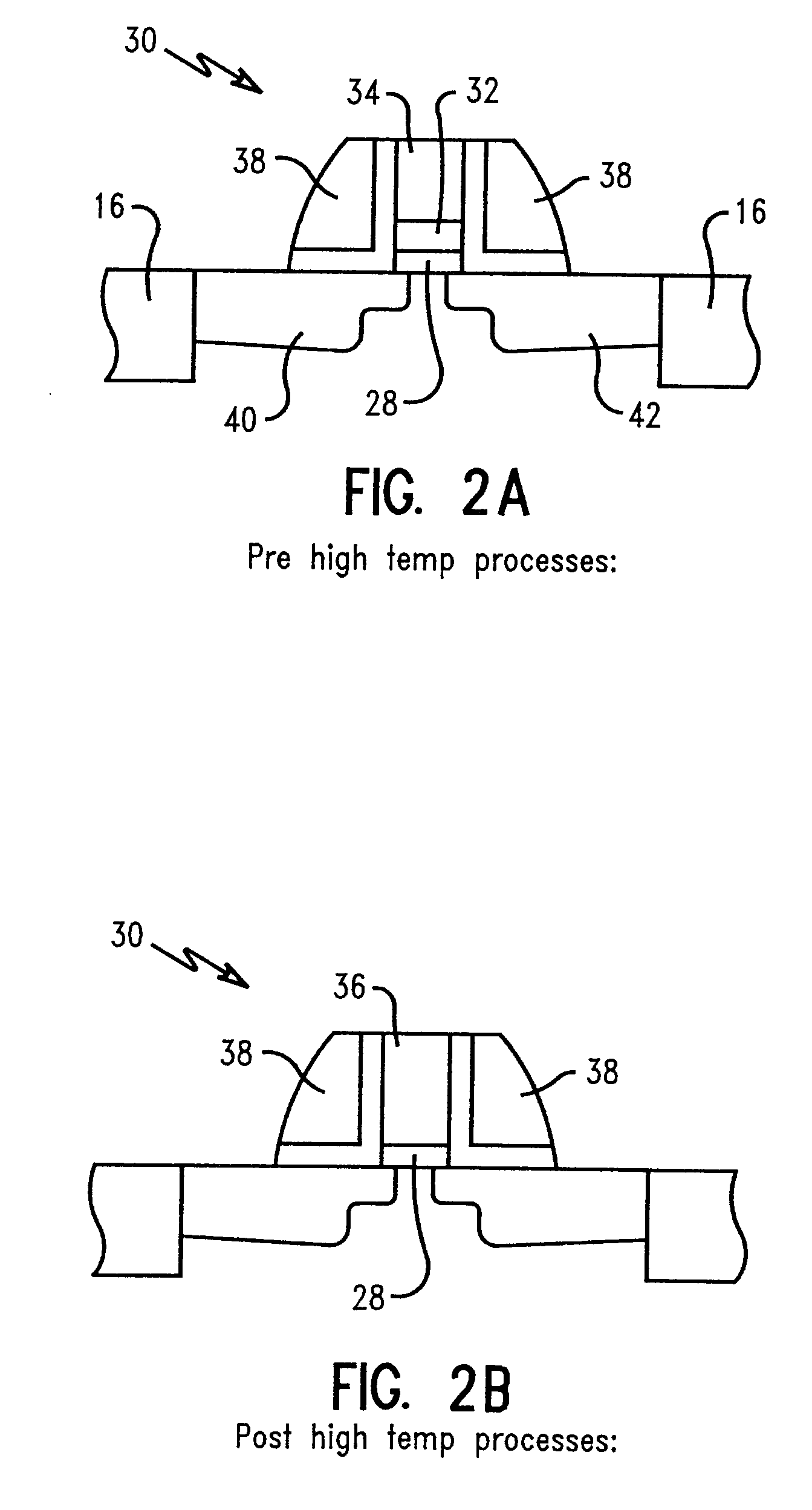Process options of forming silicided metal gates for advanced CMOS devices
a technology of cmos transistors and metal gates, which is applied in the direction of semiconductor/solid-state device manufacturing, basic electric elements, electric apparatus, etc., can solve the problems of high interface effects, polysilicon resistance related issues, and difficult to achieve metal gate integration in a conventional process flow for cmos transistors, so as to minimize the attack or damage of gate dielectrics
- Summary
- Abstract
- Description
- Claims
- Application Information
AI Technical Summary
Benefits of technology
Problems solved by technology
Method used
Image
Examples
first embodiment
[0050] The gate dielectric 18, metal layer 20, and silicon layer 22 are patterned to define a gate structure having sidewall spacers 24. The patterning may be performed using conventional photolithography and a reactive ion etch (RIE). A polysilicon layer or an oxide film may be used as a hard mask for the patterning of the gate. In this first embodiment, the metal layer 20 is shown to be substantially thicker than the silicon layer 22. FIG. 1B depicts gate 10 after a post high temperature anneal process. Silicon layer 22 is shown transformed into silicide layer 26, forming a cap over the metal layer 20. The formation of the CMOS gate then proceeds in a conventional manner.
[0051] In a second, similar embodiment, shown in FIG. 2, the silicon layer is deposited at a thickness greater than the metal layer it protects. FIG. 2A depicts a gate structure 30 having a thick polysilicon layer 34 relative to a thin metal layer 32 deposited within the gate prior to annealing. The polysilicon an...
third embodiment
[0052] In a third embodiment, the gate may optionally have polysilicon sandwiched between two suicides. This configuration depends, in part, upon the overall stack height and layer thickness, among other factors. FIG. 3A depicts a CMOS gate structure 50 having a polysilicon layer fabricated on a metal gate layer. Prior to exposing gate structure 50 to annealing, a silicon layer 52 is deposited on a metal layer 54, which is over a gate dielectric 55. The silicon layer is within a gate structure defined by sidewall spacers 56, source region 58, drain region 60, and shallow trench isolation regions 62. The silicon layer 52 is thick relative to the metal layer 54. After high temperature annealing, a first silicide layer 66, as shown in FIG. 3B, is formed consuming the entire metal gate layer. Important to this embodiment, a second silicide layer 68 may be formed over the polysilicon layer 64. FIG. 3C depicts the post source / drain / gate silicide structure having a polysilicon layer 64 bet...
fourth embodiment
[0053]FIG. 4 depicts, as a fourth embodiment, construction of the metal / silicide gate of the present invention prior to any gate definition. In the pre-silicide formation of FIG. 4A, gate dielectric layer 72, metal layer 74, and silicon layer 76 are deposited over shallow trench isolation regions 78 of substrate 70. The silicon may be deposited using PVD or CVD processes. After high temperature annealing, a silicide layer 80 is formed, as shown in FIG. 4B, over the metal layer 74 and gate dielectric layer 72. Unlike the previously described embodiments, the gate structure is formed after the high temperature process. FIG. 4C depicts a gate 82 formed having sidewall spacers 84, source region 86, and drain region 88, as a post silicide annealing process. In this process the gate metals may comprise Co, W, Mo, Ru, Rh, Re, Ir, and the like. The suicide formed is a reaction of the polysilicon with the gate metal.
PUM
 Login to View More
Login to View More Abstract
Description
Claims
Application Information
 Login to View More
Login to View More - R&D
- Intellectual Property
- Life Sciences
- Materials
- Tech Scout
- Unparalleled Data Quality
- Higher Quality Content
- 60% Fewer Hallucinations
Browse by: Latest US Patents, China's latest patents, Technical Efficacy Thesaurus, Application Domain, Technology Topic, Popular Technical Reports.
© 2025 PatSnap. All rights reserved.Legal|Privacy policy|Modern Slavery Act Transparency Statement|Sitemap|About US| Contact US: help@patsnap.com



